Can I make the 01DEC2023 build deadline?
Part 2: 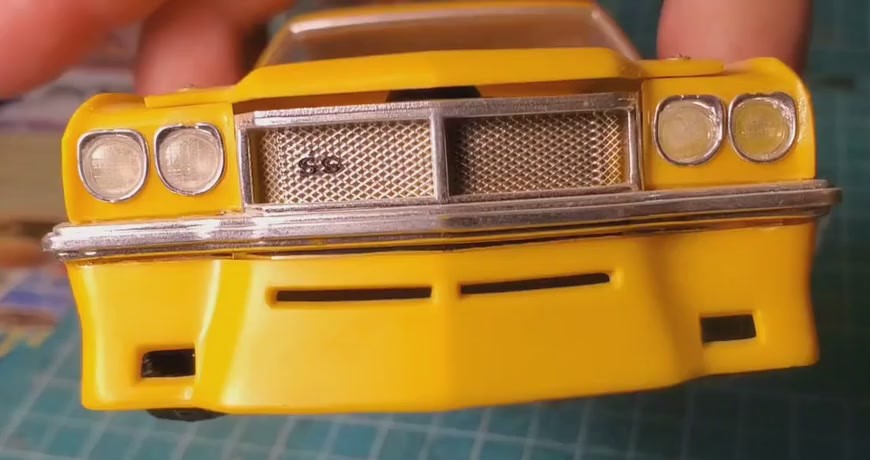 1970 CHEVY MALIBU, REVELL-MONOGRAM MERGER, WAS IT WORTH IT?
1970 CHEVY MALIBU, REVELL-MONOGRAM MERGER, WAS IT WORTH IT?
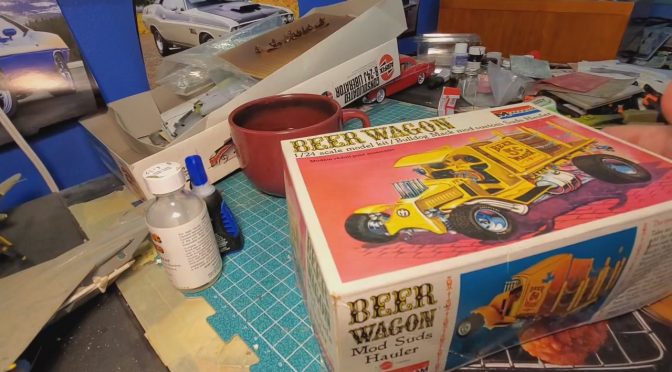
Can I make the 01DEC2023 build deadline?
Part 2:  1970 CHEVY MALIBU, REVELL-MONOGRAM MERGER, WAS IT WORTH IT?
1970 CHEVY MALIBU, REVELL-MONOGRAM MERGER, WAS IT WORTH IT?
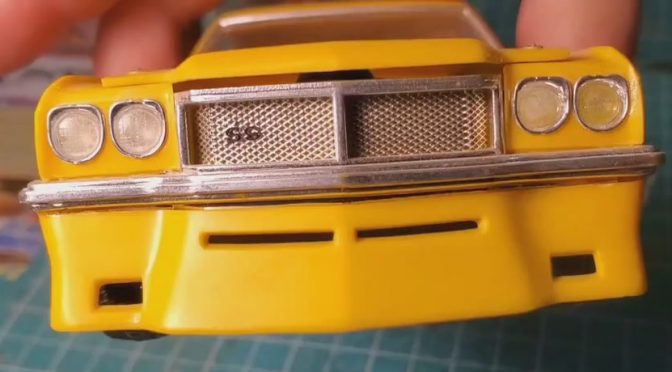
I continue my laborious ramblings about why the one time issued Monogram 1/24 scale 1970 Chevy Malibu is so significant to me.
How did I end up in Idaho, and is ‘following the jobs’ worth it?
Part 1: 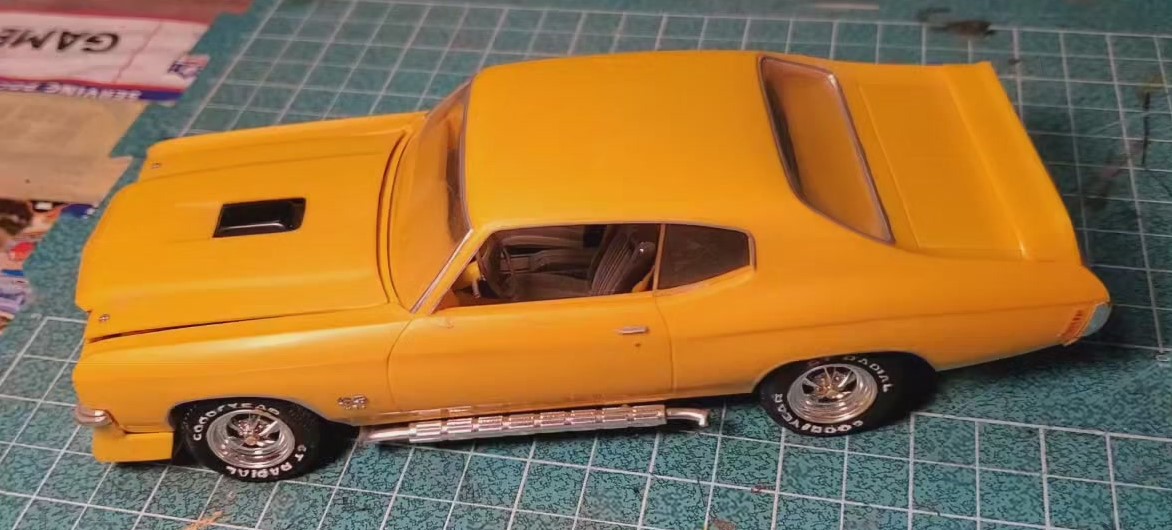 1970 CHEVY MALIBU, MY OLDEST SURVIVING CAR KIT & WHY IT’S SPECIAL TO ME
1970 CHEVY MALIBU, MY OLDEST SURVIVING CAR KIT & WHY IT’S SPECIAL TO ME
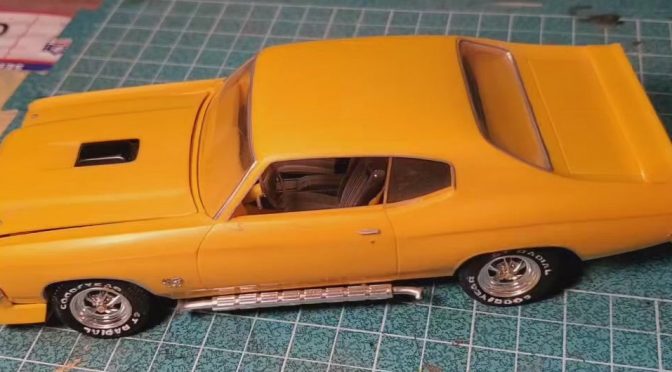
In 1982, I built this 1/24 Monogram kit as a reward for myself, for legally graduating high school at the age of 16 and being able to join the military at the age of 17, despite the fact my parents, and high school principal, said it couldn’t be done.
Kit Bashing: WHERE IS BLACKBIRD NASA 831? AND THE PROBLEMS WITH THE OLD TESTORS KIT.
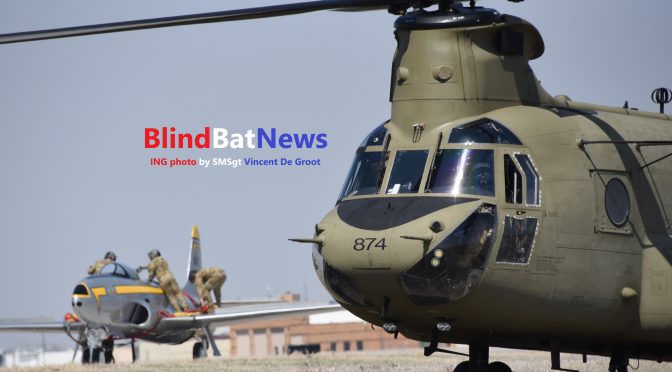
On 11APR2023, the Iowa Army National Guard was called in to move an Iowa Air National Guard ‘gate guard’, using their Viet Nam era CH-47 Chinook.
The Korean ‘UN police action’ era F-80 Shooting Star had just gotten some new clothes, in order to proudly continue its guard duties on Camp Dodge.
Iowa Air National Guard video by Senior Master Sergeant Vincent De Groot, 11APR2023:
The painting process began on 15SEP2022, when the F-80 was sling loaded to the paint shop in Sioux City.
Iowa Air National Guard video by Senior Master Sergeant Vincent De Groot, 15SEP2022:
It wasn’t the first time the Iowa Air Guard F-80 got new clothes.
In April 2011, the Shooting Star was stripped naked and fitted for the uniform of the 174th Fighter Bomber Squadron, for its new job as a gate guard on Camp Dodge.
Cold War Vehicle I-D:
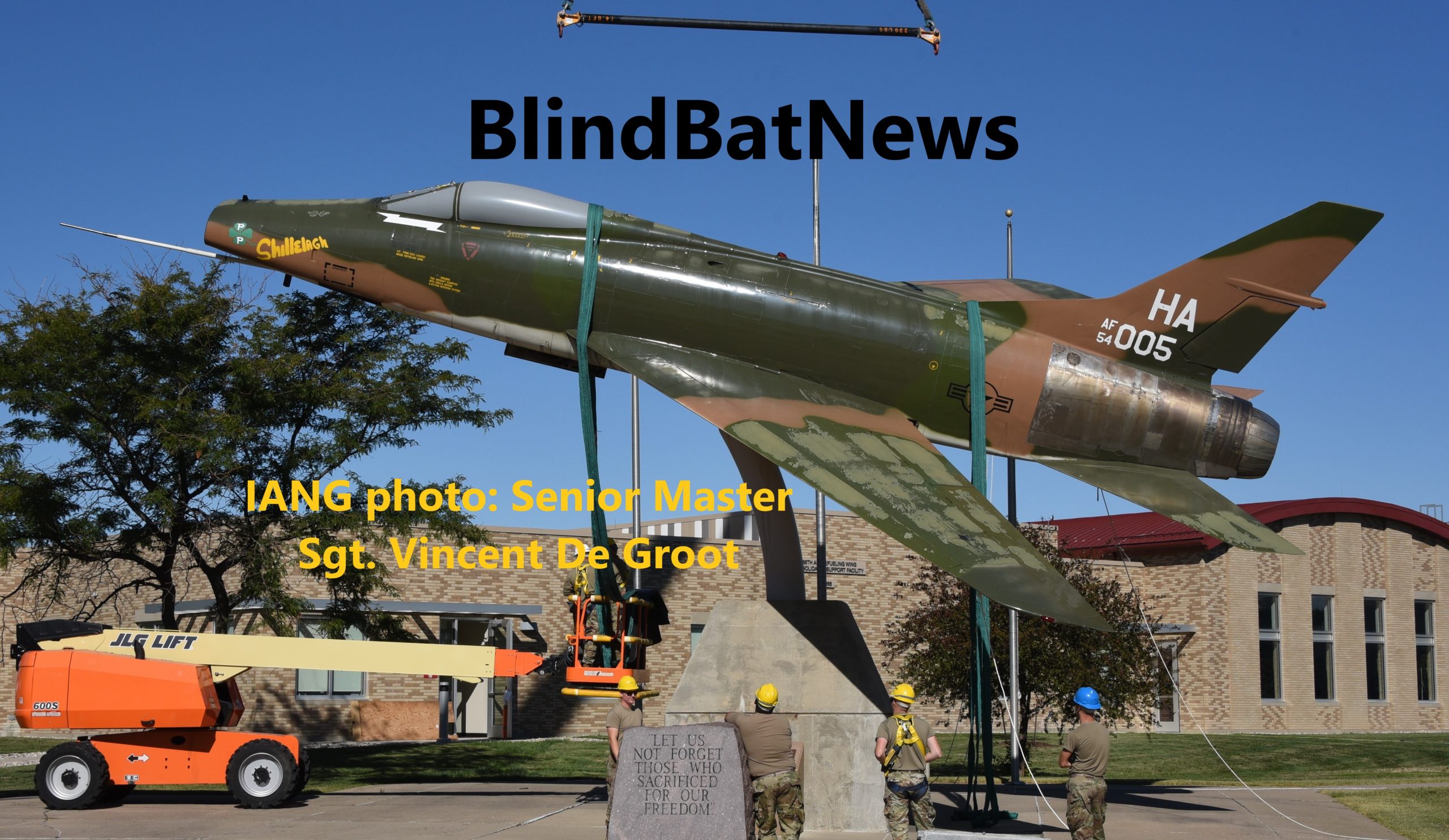 IOWA CHANGING OF THE GUARD; F-100
IOWA CHANGING OF THE GUARD; F-100 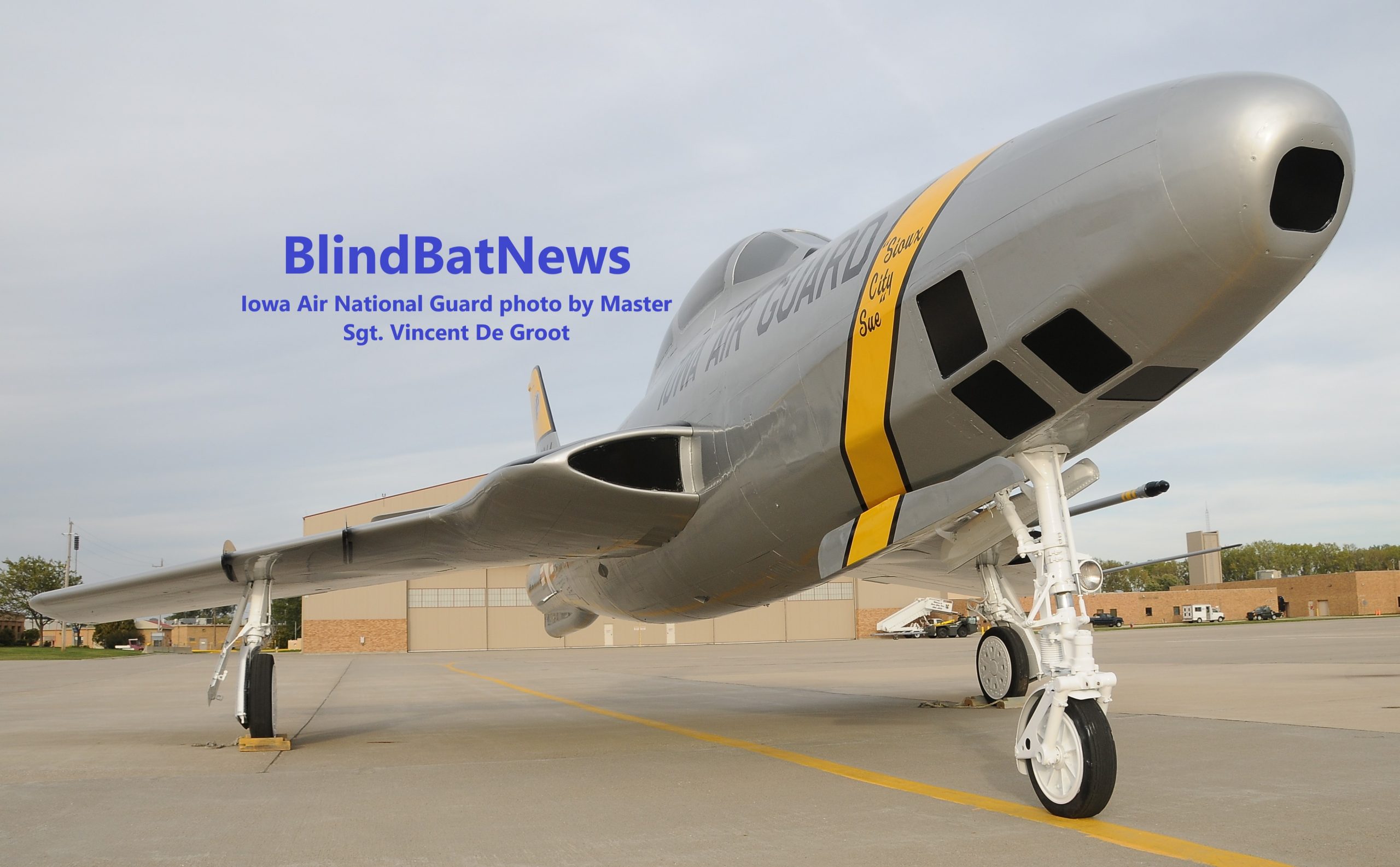 Iowa’s RF-84F THUNDERFLASH & YRF-84F, AN APPEAL TO MONOGRAM!
Iowa’s RF-84F THUNDERFLASH & YRF-84F, AN APPEAL TO MONOGRAM!
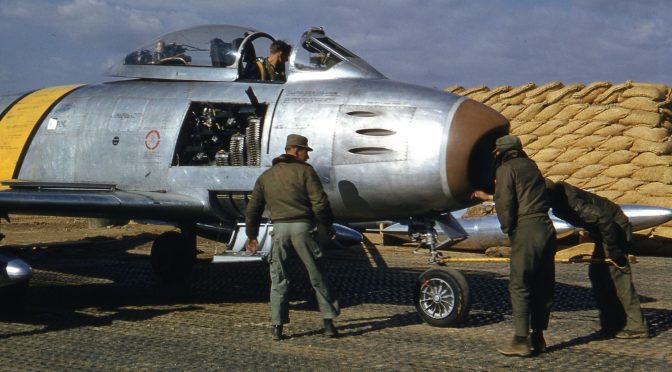
Cold War: Approximately 1947 (due to U.S. President Harry Truman’s Truman Doctrine) to 1991 (Operation Desert Storm, collapse of Soviet Union).
In June 1950, the Democratic People’s Republic of Korea (north) invaded the Republic of Korea (south) in an attempt to unite the country (something that had been promised at the end of World War Two). The recently created United Nations essentially declared war and created the United Nations Command, invading Korea in September 1950. The United Nations Command still operates in South Korea, today.
Silent U.S. Air Force film (by H.E. Reid), re-arming and re-fueling your F-86 after a mission, Kimpo, Korea, 17DEC1950:
The F-86 used three Browning M3 12.7mm x 99mm (.50 caliber) machine guns.
The first F-86 Sabers to arrive in Korea touched down on Kimpo, 15DEC1950. Three squadrons of F-86As had been sent to Korea to deal with the Soviet MiG-15.
Silent USAF film (by Frank Evans) of arming and fueling your F-86 near Taegu, Korea, 25-26JAN1951:
Freshly armed and fueled Sabers take off from Taegu, silent film by Frank Evans:
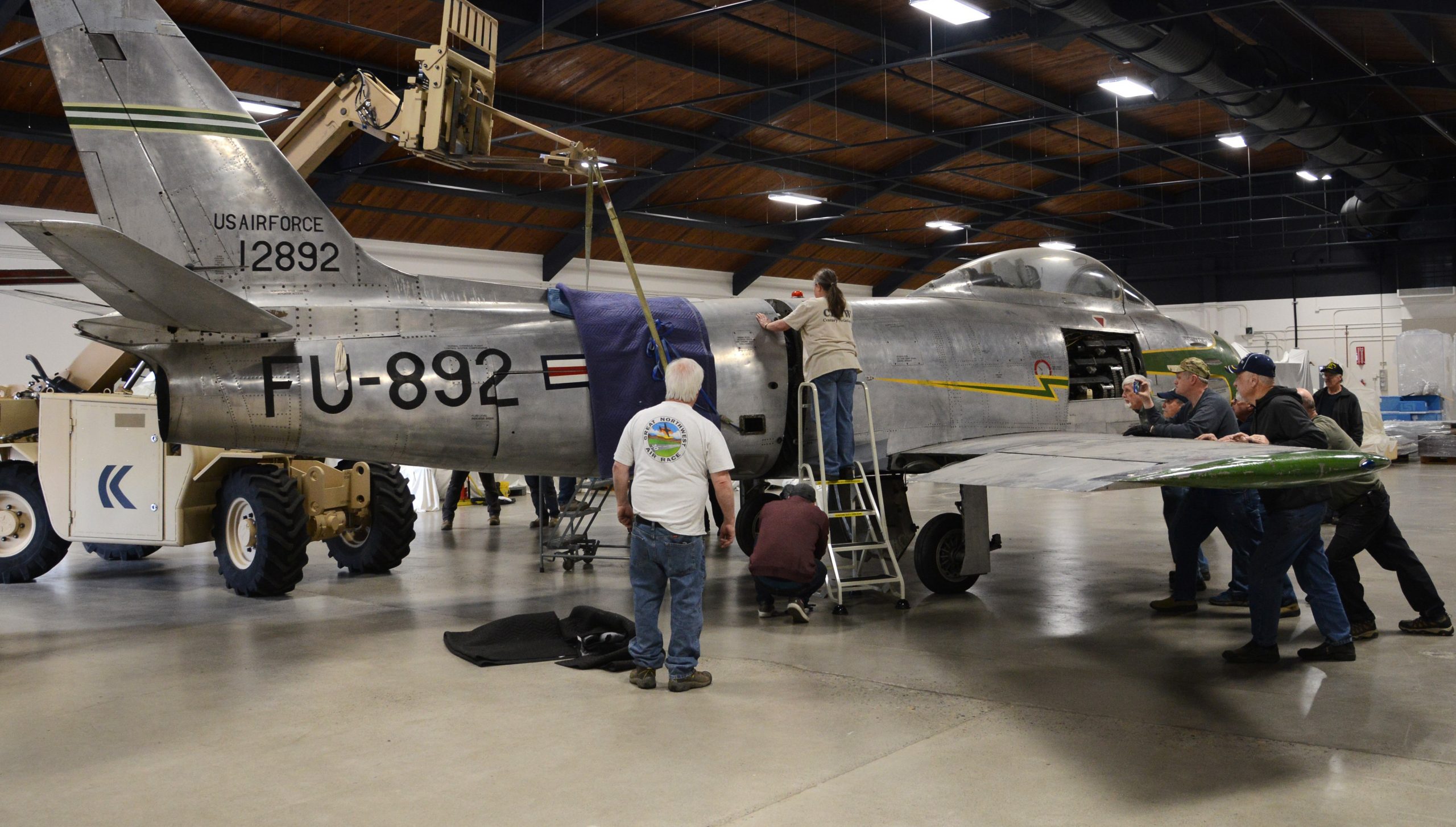 HOW TO ASSEMBLE YOUR 1:1 SCALE F-86
HOW TO ASSEMBLE YOUR 1:1 SCALE F-86
Kit Bashing: 1:72 COMPARISON F-86 SABER FUJIMI VS HELLER, OR, NOBODY IS PERFECT!
HELLER, FUJIMI & HOBBYCRAFT F-86 SABRE KITS COMPARED
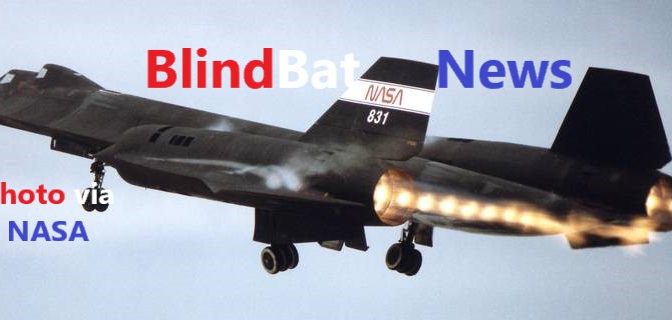

NASA photo of SR-71B #831, July 1991.
The ‘B’ version of the Blackbird has ventral fins on the nacelles, like the YF-12A.
Silent take-off video from 1991:
In July 1991, NASA began using the last of two SR-71B trainers (the other SR-71B was lost in a crash in 1968), #61-7956, also known as NASA 831.
Silent refueling video from 1991:
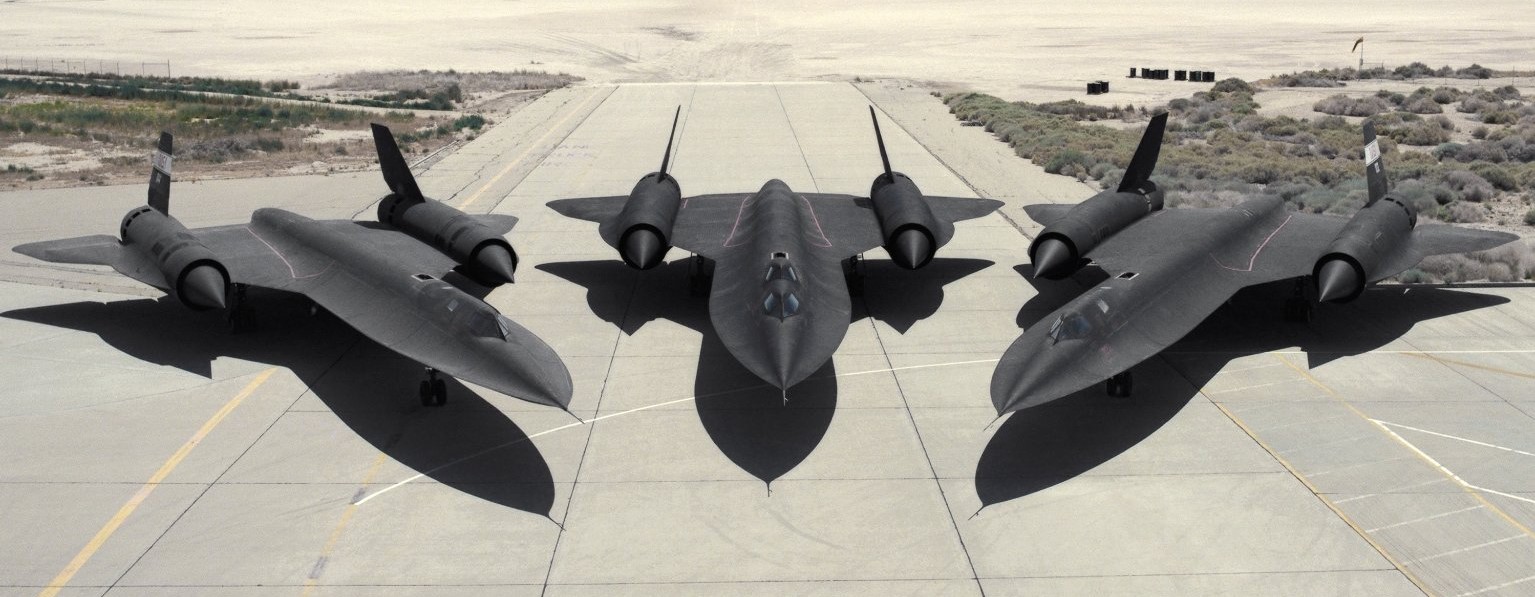
NASA photo from 1992, showing-off the three SR-71s they got ‘on loan’ from the U.S. Air Force. NASA 831 is in the middle.
Silent take-off video from 1992:
831 was used for crew training and various research programs on Dryden Flight Research Center (now called Armstrong Flight Research Center, on Edwards Air Force Base), California, until October 1997.

NASA photo from August 1997, in the foreground is SR-71A carrying the Linear Aerospike experiment, behind it is retiring SR-71B 831.
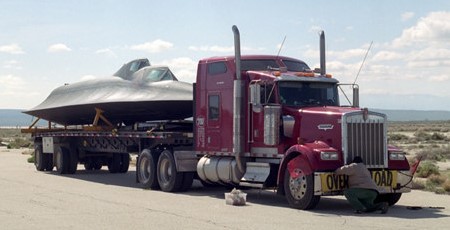
At the end of 2002, pieces and parts of NASA 831 were loaded onto tractor-trailers at Edwards AFB (Dryden Research Center), California, for the trip to Michigan. Photo via NASA.
In March 2003, NASA 831 went on display at the Kalamazoo Aviation History Museum in Kalamazoo, Michigan. Some very detailed walk-around photos of its arrival, in pieces, can be seen at SR-71.org, as well as a history of the reconstruction at the museum.
In 2015 (and updated in 2017), for some reason NASA claims 831 went on display at the Pima Air and Space Museum in Tucson, Arizona. However, a check of the Pima Air and Space website reveals it is an SR-71A, not the B version.
To confuse things even more, some aviation blogs claim the Evergreen Aviation & Space Museum in McMinnville, Oregon, has NASA 831! The museum’s own SR-71 FAQ section states they’ve had the SR-71 since 2002! They post three photos; two are NASA photos, with one being of 831, and the other being an SR-71A being configured for the Linear Aerospike experiment. The third photo is of the museum’s SR-71 and it is clearly an SR-71A, not the B or even 831.
At this point, the Kalamazoo Aviation History Museum is the only location that has photographic proof that they have NASA 831. Not only does their website have lots of detailed photos of NASA 831, but they got lots of photos of other Blackbirds.
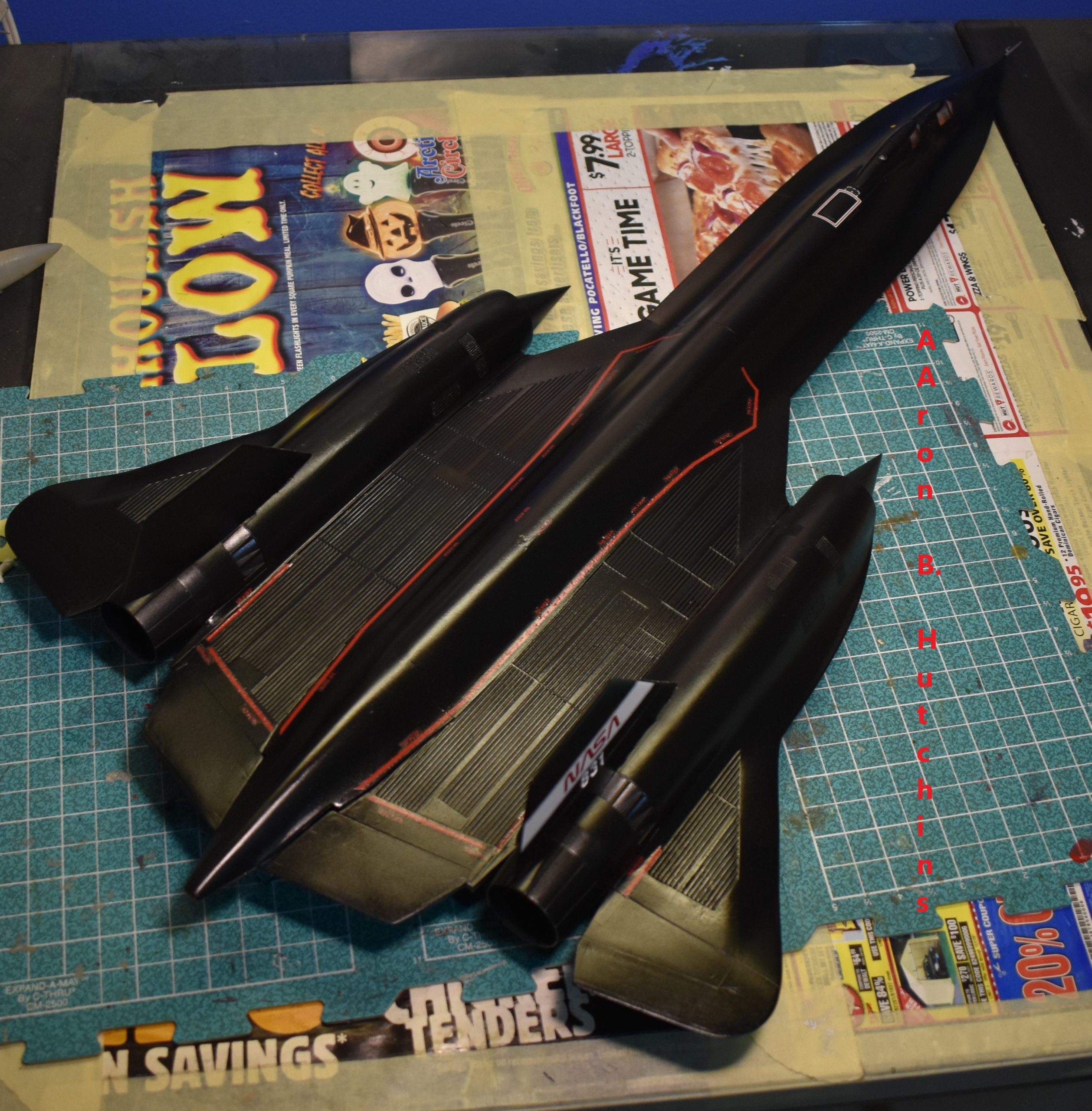
Testors SR-71 built as the ‘B’ version, NASA 831. I had to scratch build an aerial refueling door as Testors did not provide it.
After 25 years in my stash-pile, and realizing that the outrageous prices being fetched for an old Testors SR-71 might be due to Testors ceasing to exist, and the fact that the new Revell-Germany SR-71 does not include parts for the ‘B’ version, I decided it was time to build it.
The first problem I came across with the kit itself, was that Testors molded the refueling door in the open position and did not provide a door for the closed position, I wanted it closed so I had to use plastic sheet to cover the open fuel receptacle. Perhaps Testors got confused, photos of parked SR-71s do show the refueling door open, but that is because the hydraulics have relaxed, in-flight the door is closed, except when refueling.
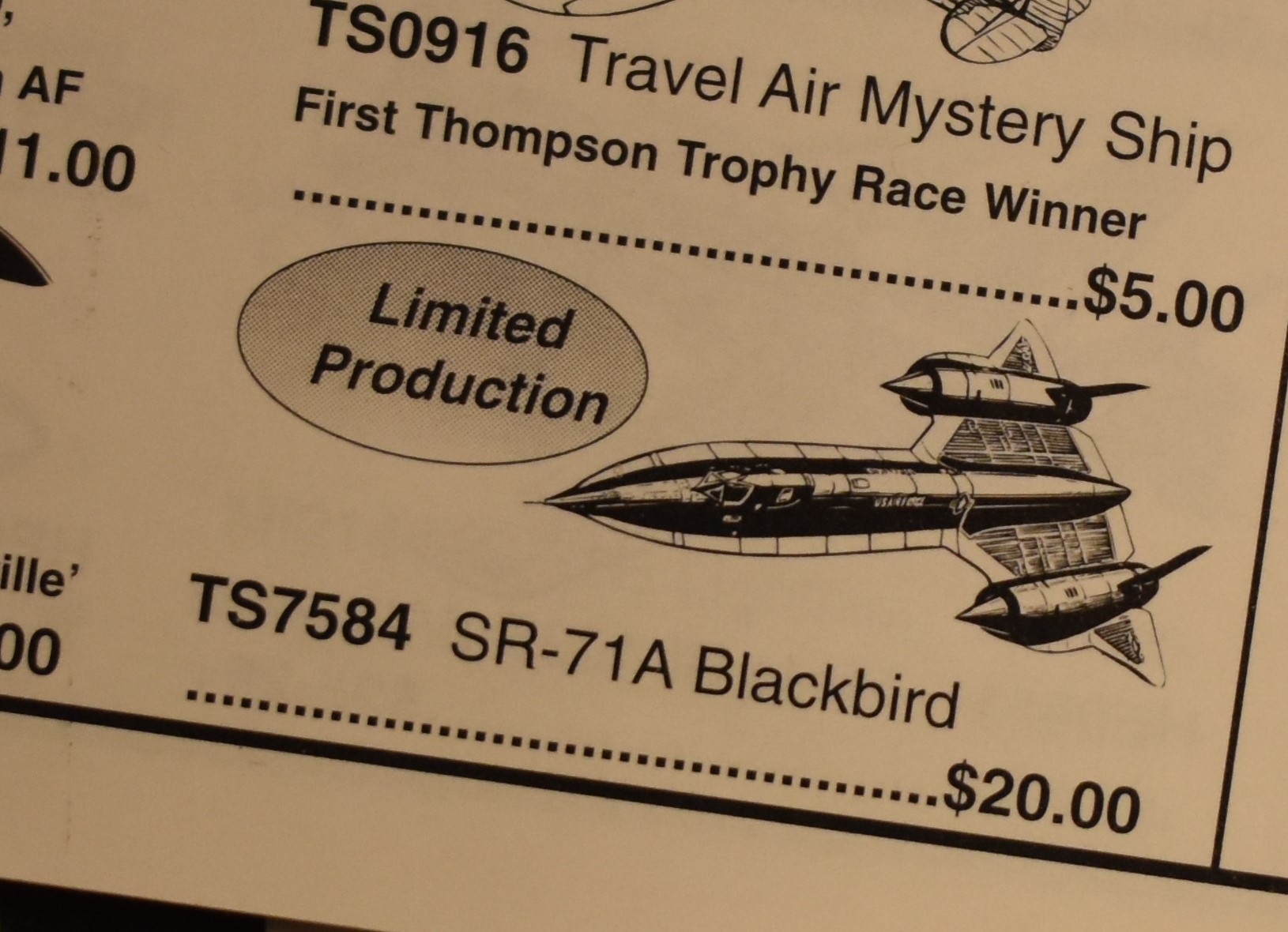
I still have a mail-order catalog showing the MSRP of $20 back in 1996-97. I realized that the kit was not promoted as being able to build the B version.
I bought the Testors kit back in 1997, when it was a whopping $20 brand new, and I got it on discount for less than $19!
Unfortunately, the box and decals didn’t survive the test of time; the outer end opening box literally began disintegrating, and the decals were cracked beyond use (I tried, even with a coat of clear they shattered in the water), I ended up getting some Caracal-Cartograf decals.
I learned that if you follow the instructions and attach the rudders to the nacelles first, you will have problems attaching the afterburners. Attach the afterburners before attaching the rudders. I glued the intake spike (shock cone) behind the mounting point as I was building it to represent being in-flight. The shock-cone retracts into the nacelle allowing the Blackbird to fly faster.
Another problem is that the mounting holes in the center section are too small to allow the nacelles to fit. Even after hollowing them out, and thinning the posts on the nacelles, I still ended up with stress cracks on the center section.
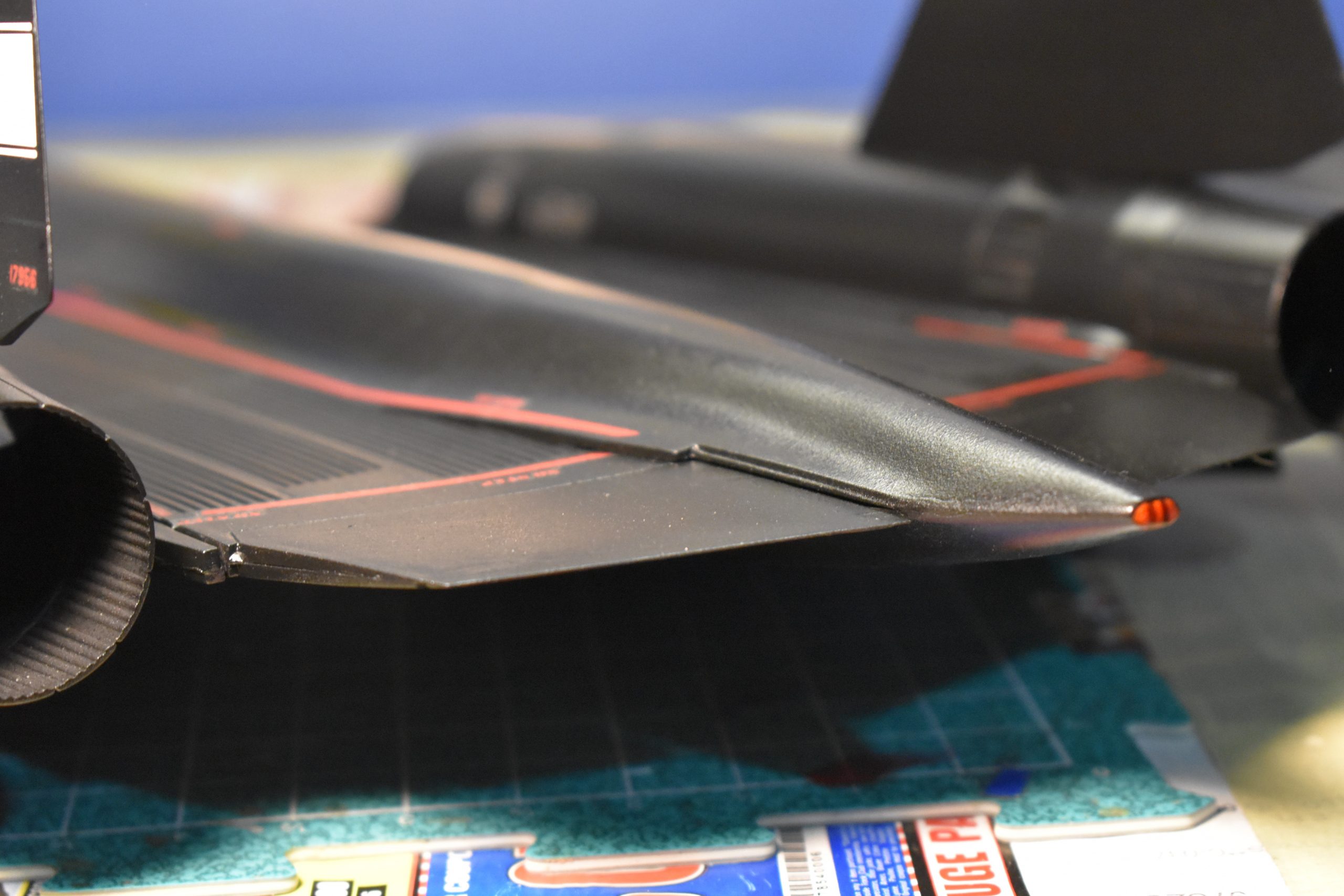
Lack of mounting stubs caused the rear part of the wing to droop. Testors does not replicate the fuel dump, I tried by filing the pointy end flat and using paint.
For some reason Testors did not model the prominent fuel dump at the back of the Blackbird. I decided to flatten the pointy end and then use red paint to represent the fuel dump. Most photos of the rear-end of SR-71s show the inside of the fuel dump was painted red.
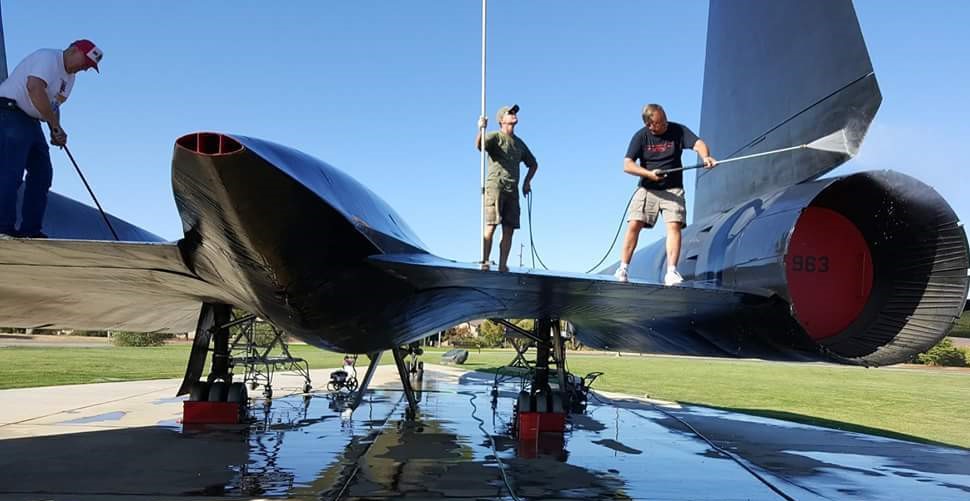
An SR-71 gate-guard on Beale AFB, California, showing the red painted fuel dump. USAF photo, 26JAN2016.
The kit does not come with pilots, using putty I modified some old Monogram pilots to look like astronauts, but then discovered the seats wouldn’t allow them to fit. I had to chop off the pilot’s feet, butts and part of their backs to get them to fit.

I modified some spare Monogram pilots. Turns out the red borders around the canopy glazing are incorrect, and the clear I used to get them to stay down fogged the canopies.
Forget those red canopy border decals, they are flat wrong. While reviewing photos (unfortunately after I applied the decals) I noticed there are no red borders. At certain angles it might look like there are, but the red that is sometimes seen around the glazing is actually the seals inside the canopy framing.
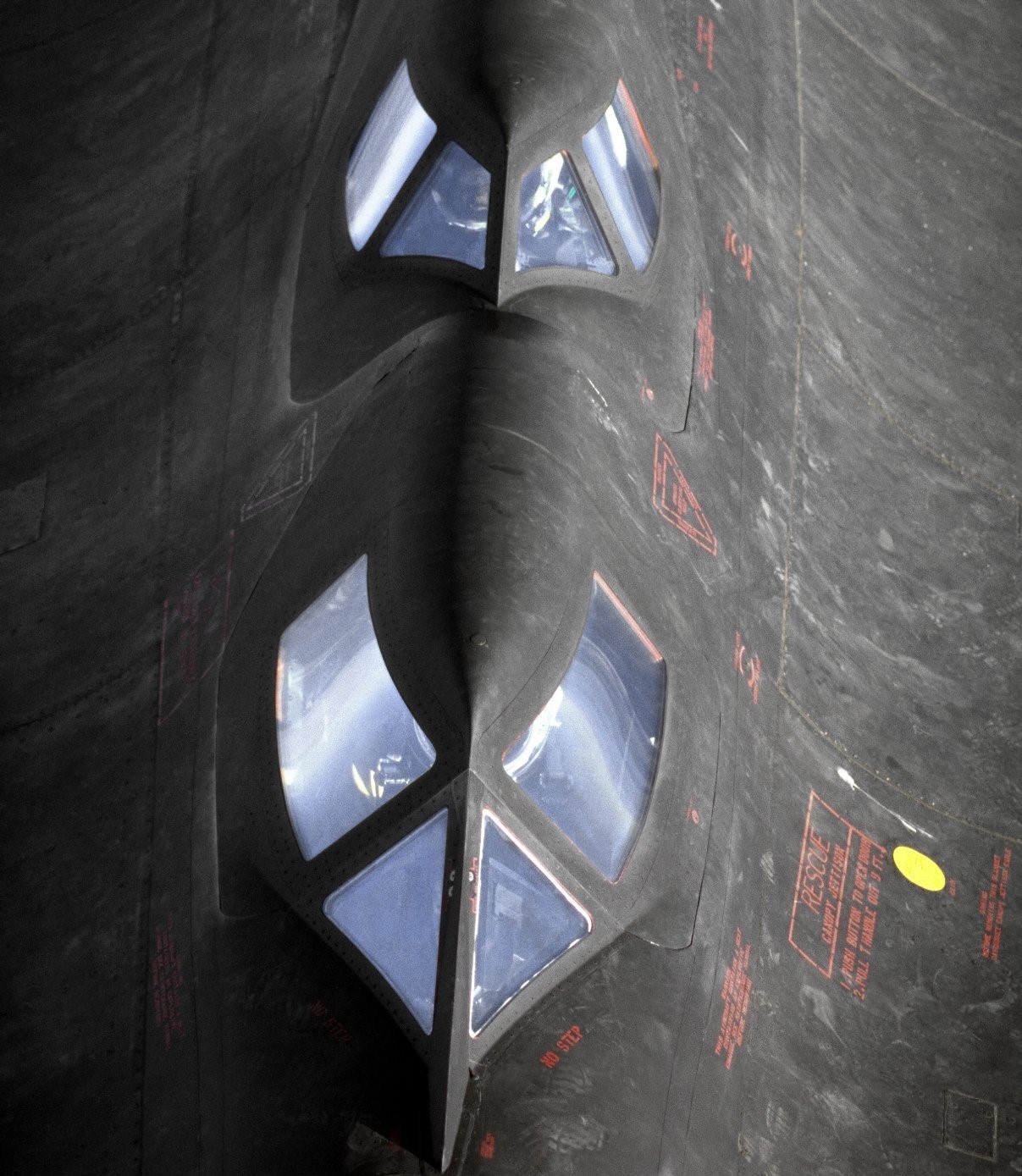
In this close-up of NASA SR-71B 831, you can see there are no red borders around the canopies. What is red are the seals inside the canopy framing. NASA photo, December 1994.
It was in the Caracal-Cartograf Blackbird Part-2 decal set that I discovered the markings for NASA 831.
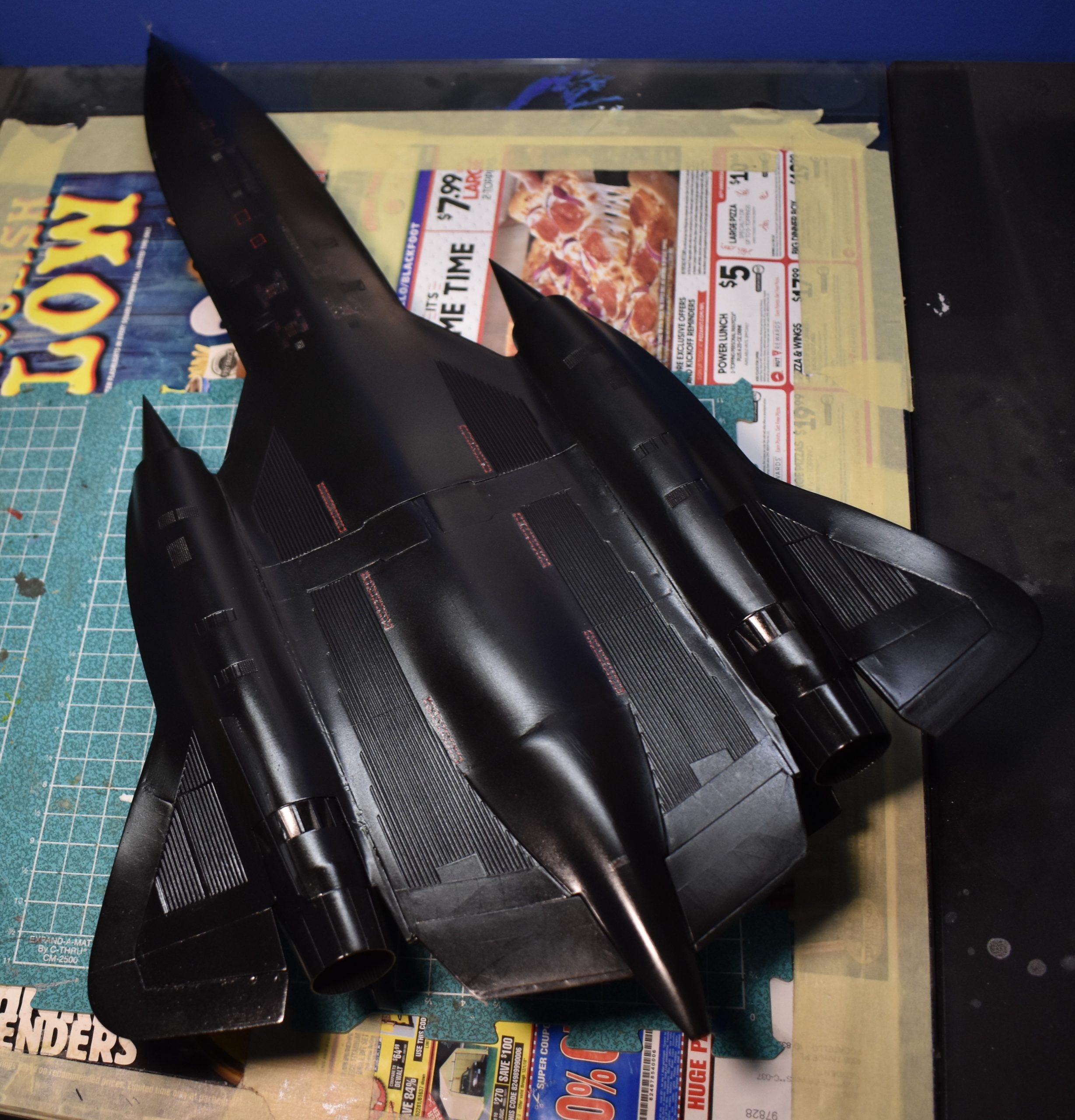
You might not can see, but even a coat of clear paint failed to force the aftermarket decals to lay flat on the underside of the Blackbird.
Even expensive (almost as much as what I paid for the Testors kit back in 1997) aftermarket decals can be wrong (like the red canopy borders), and not cooperate. For some reason not known to me, the decals would not settle down on the underside of the kit. Decal solution failed to keep the decals from wrinkling. I applied clear paint and the result was no more wrinkles, instead I got blisters which hardened when the paint dried.
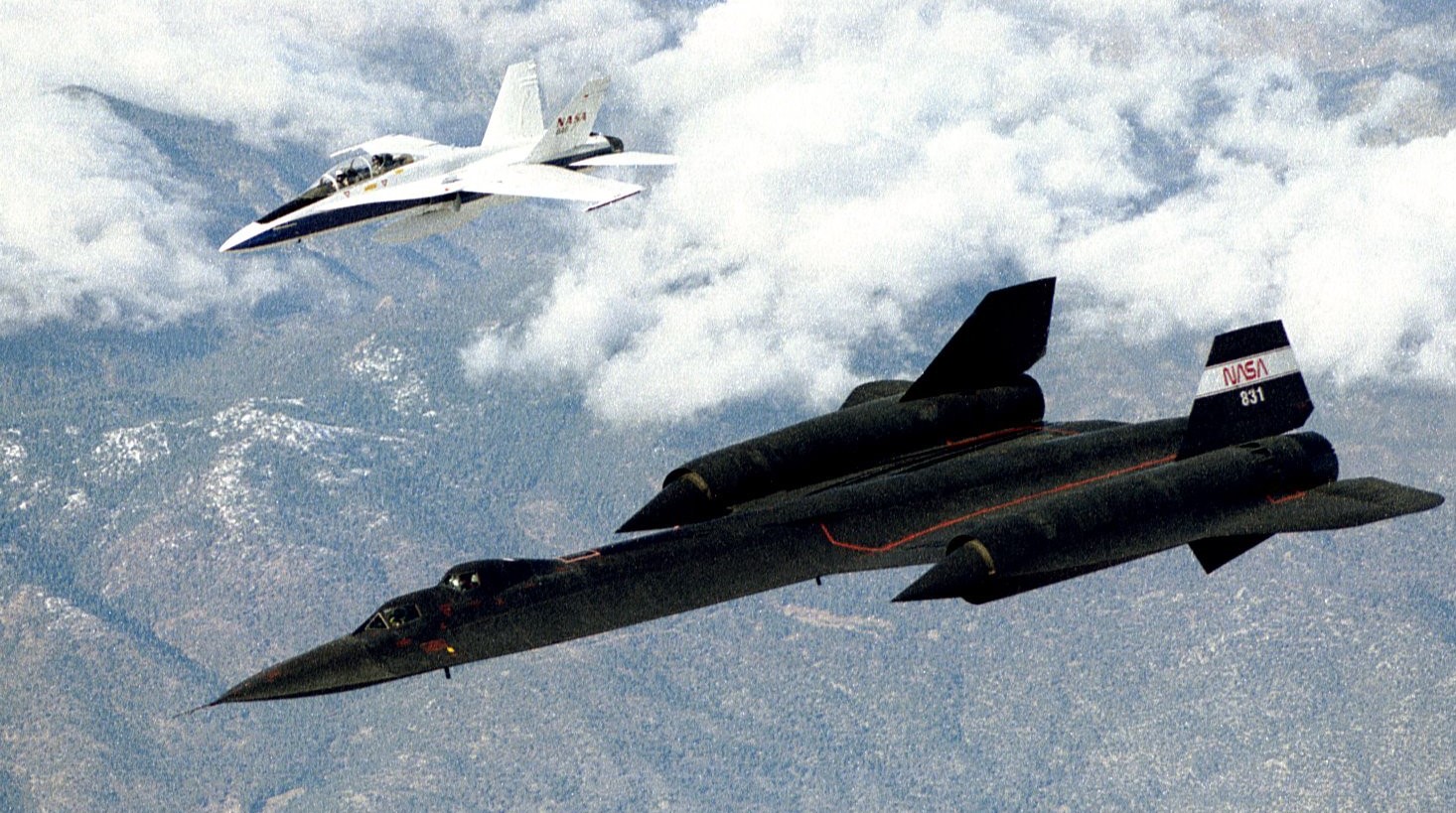
831 cruises over the Mojave Desert with a NASA F/A-18 Hornet flying safety chase. NASA photo sometime in 1996.
F-15 Eagle 50th Anniversary: 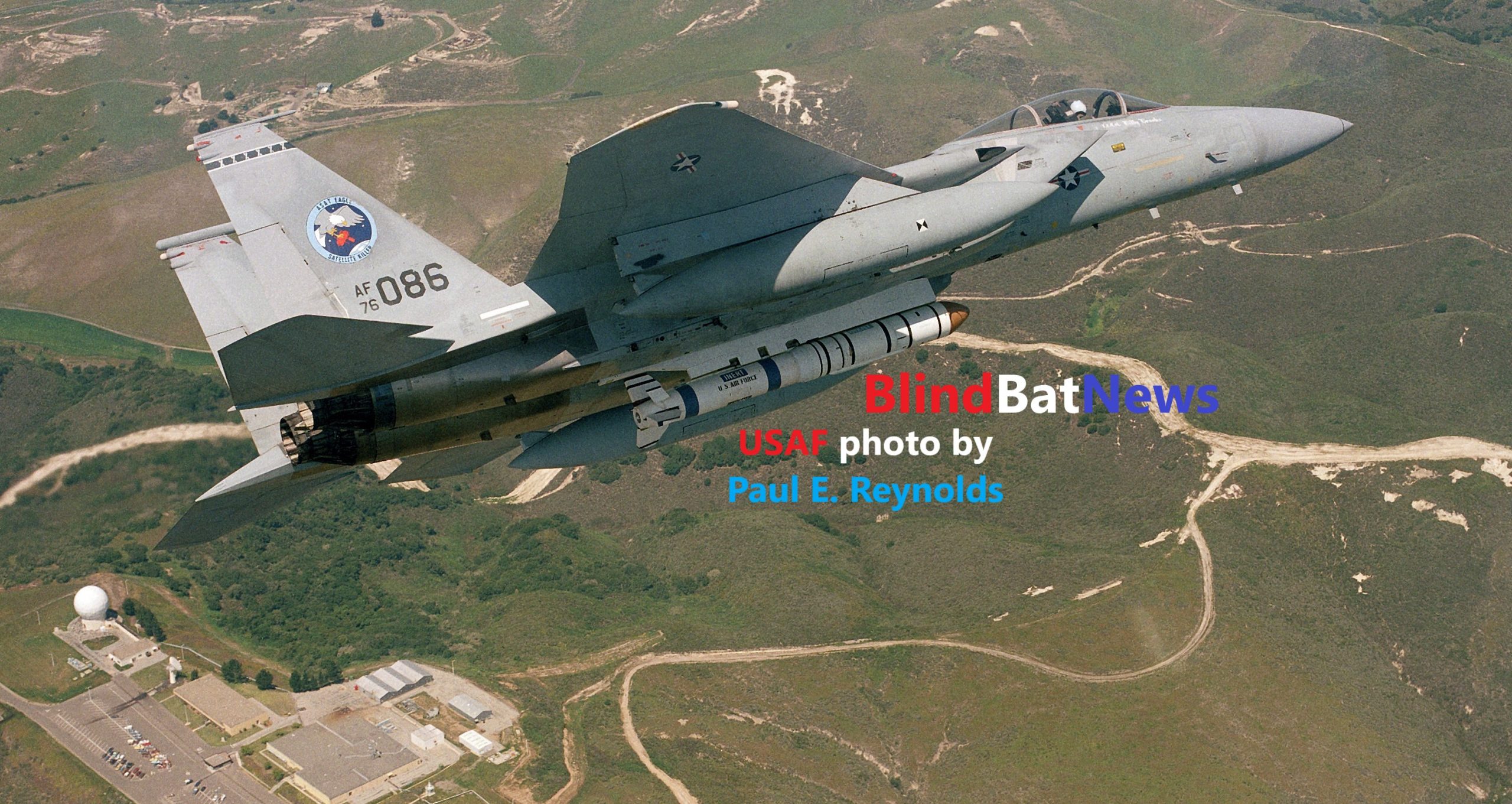 THE A-SAT, WITH SOME VISUAL TIPS FOR THE KIT BUILDER
THE A-SAT, WITH SOME VISUAL TIPS FOR THE KIT BUILDER
Cold War Boats: 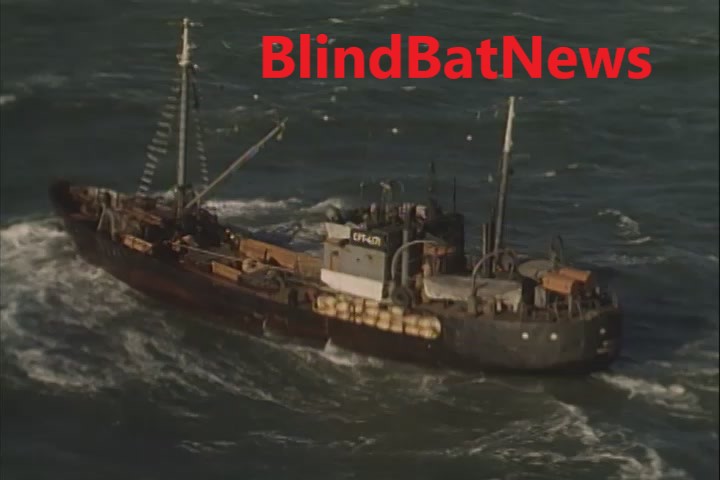 REVELL’S SPY TRAWLER IS FOR REALS! OR, WHO TOLD THE SOVIETS ABOUT EXERCISE TEAMWORK?
REVELL’S SPY TRAWLER IS FOR REALS! OR, WHO TOLD THE SOVIETS ABOUT EXERCISE TEAMWORK?
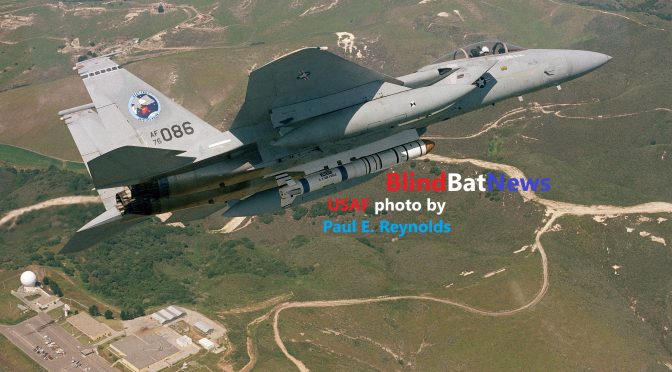
ASat=Anti Satellite
Ling-Temco-Vought (LTV) ASM (Anti Satellite Missile)-135A: Two solid-rocket stages (first stage made by Boeing), third rocket stage with telescopic heat seeker known as the Miniature Homing Vehicle, speed of 15-thousand miles per hour.
McDonnell-Douglas F-15A Eagle: F-15 EAGLE NOW 50 YEARS OLD, a quick visual history

Boeing promotional photo dated August 1982. Note, the F-15A in the background is not the F-15A used in the ‘Capture Carry’ part of the ASat testing program.
First ‘capture carry’ flights of F-15A Eagle #76-0086 armed with ASat were in December 1982.
Model kit builders take note, the ‘fin flash’ on 76-0086 is changed sometime between 1983 and 1985.
The actual launch of the ASM-135A was done in September 1985, by F-15A #76-0084 first seen in the photo from August 1982. Model kit builders note that back in August 1982, 76-0084 did not have the fin flash.
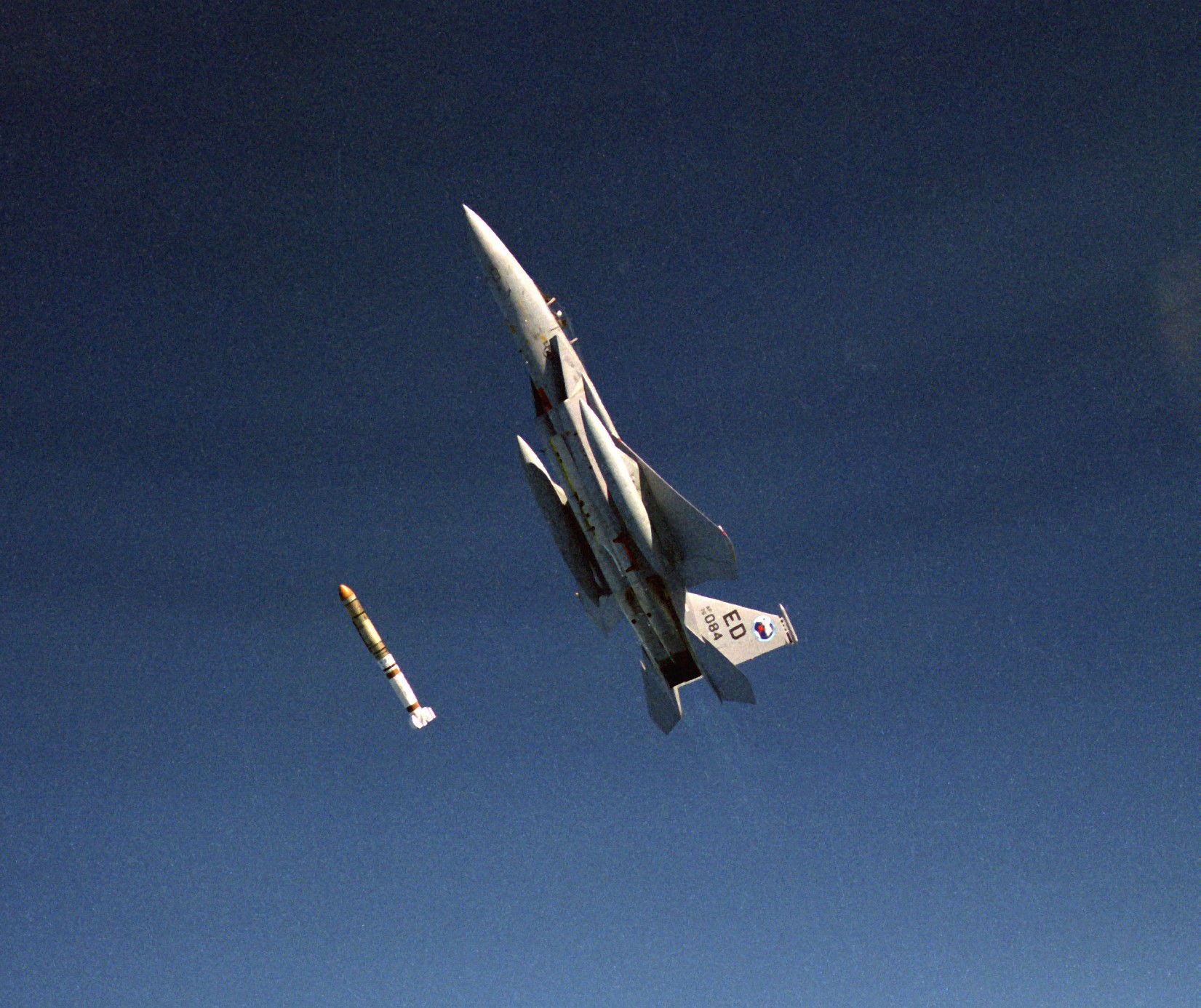
F-15 launches an ASat, somewhere off California’s Pacific Coast. USAF photo by Paul E. Reynolds, 13SEP1985.
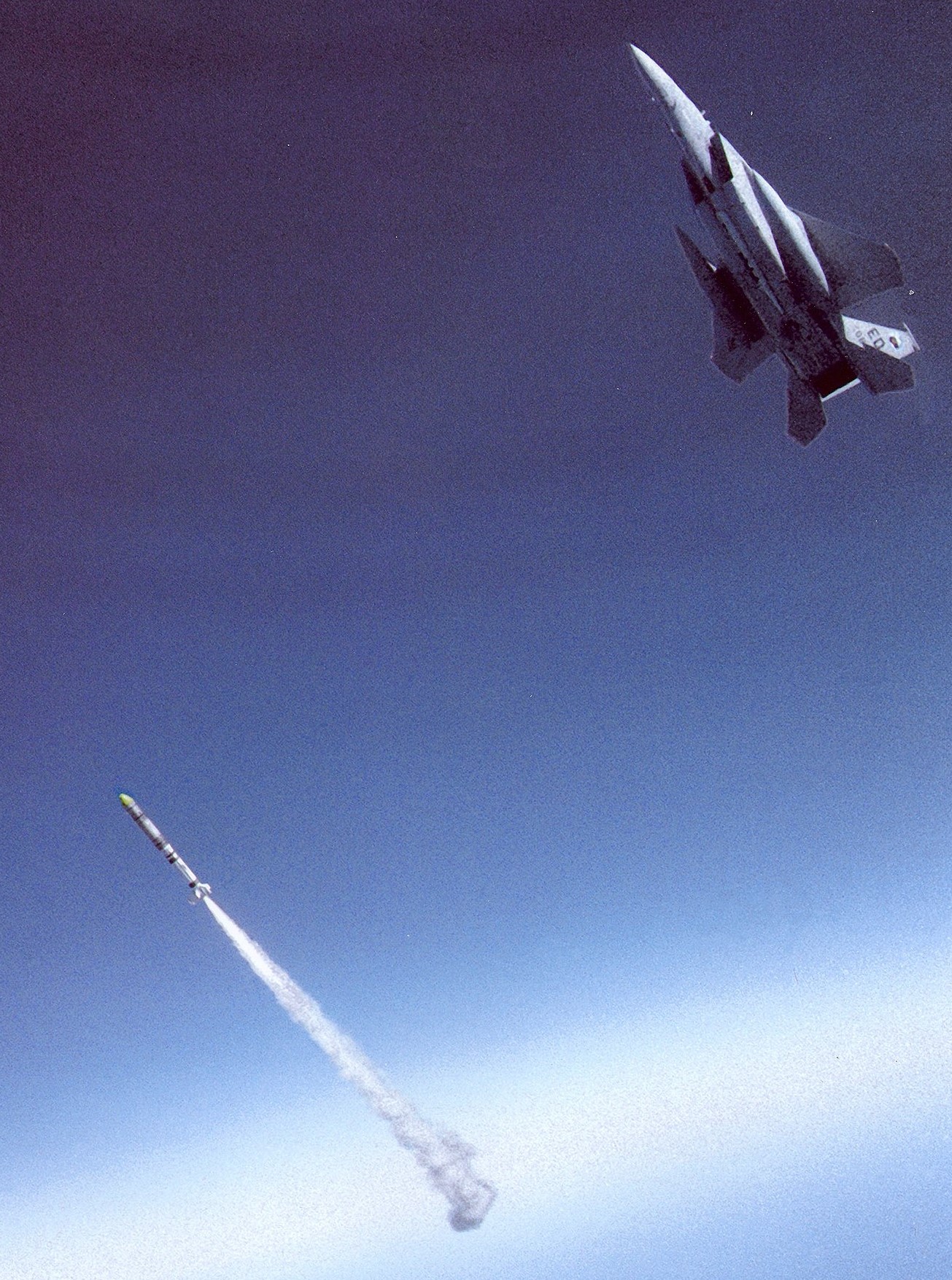
Major Wilbert ‘Doug’ Pearson successfully launched the ASM-135A. USAF photo by Paul E. Reynolds, 13SEP1985.
The successful ASat program was canceled in 1988, due to U.S. public concern over the possibility of war in space. However, that concern seems to have disappeared as the U.S. now has a dedicate military Space Force, co-chaired by the British empire.
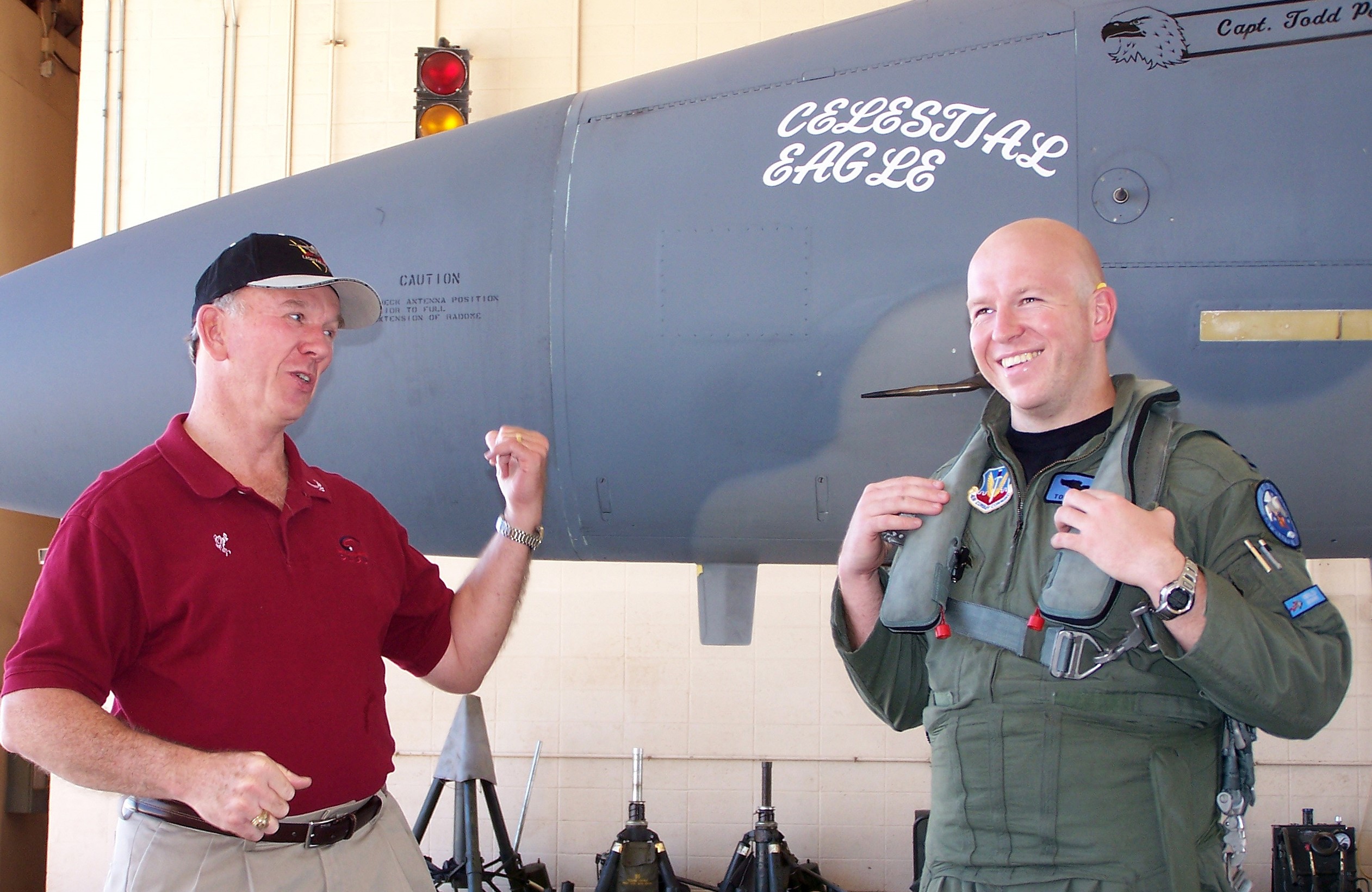
Father gives his son some pointers about flying ‘his’ Celestial Eagle. USAF photo by Senior Airman Erik Hofmeyer, 13SEP2007.
In September 2007, an anniversary flight of 76-0084 was arranged, with Major General (retired) Doug Pearson’s son, Captain Todd Pearson (and for those of use in Idaho, this is the Idaho connection), at the controls. It was then that 76-0084 was dubbed ‘Celestial Eagle’. Model builders note that it was not named Celestial Eagle at the time of the launch.
08MAR2015, USAF Space Systems Command releases this video about the only launch of ASM-135A:
Computer generated scenario of resulting debris field created by an ASat strike. As you will see by the date code on the video, it was made in 2014, yet the U.S. Air Force didn’t publicly release the video until November 2021:
F-15 50th Anniversary: LAST HURRAH FOR OREGON’S 173RD FW?
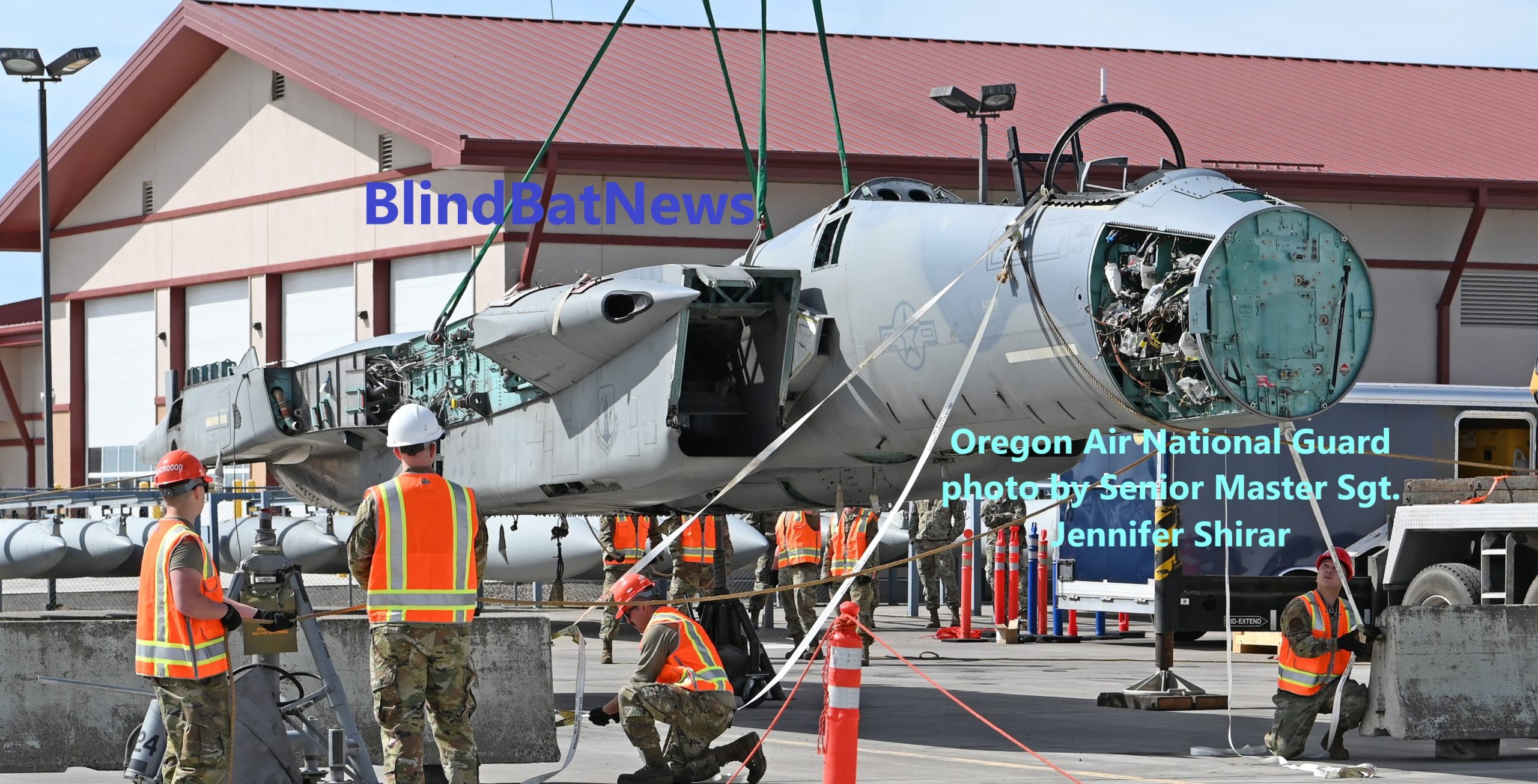 EAGLE GETS CANNIBALIZED, LEFTOVERS SENT TO THE BONEYARD, NO MORE OREGON EAGLES?
EAGLE GETS CANNIBALIZED, LEFTOVERS SENT TO THE BONEYARD, NO MORE OREGON EAGLES?
 DESERT STORM FIRST BLOOD FOR USAF F-15s, THE NEVER ENDING TAR BABY CALLED IRAQ!
DESERT STORM FIRST BLOOD FOR USAF F-15s, THE NEVER ENDING TAR BABY CALLED IRAQ!
F-15A POLE DANCER, OR WHATEVER HAPPENED TO 72-0113?
Terminator, October 2022: 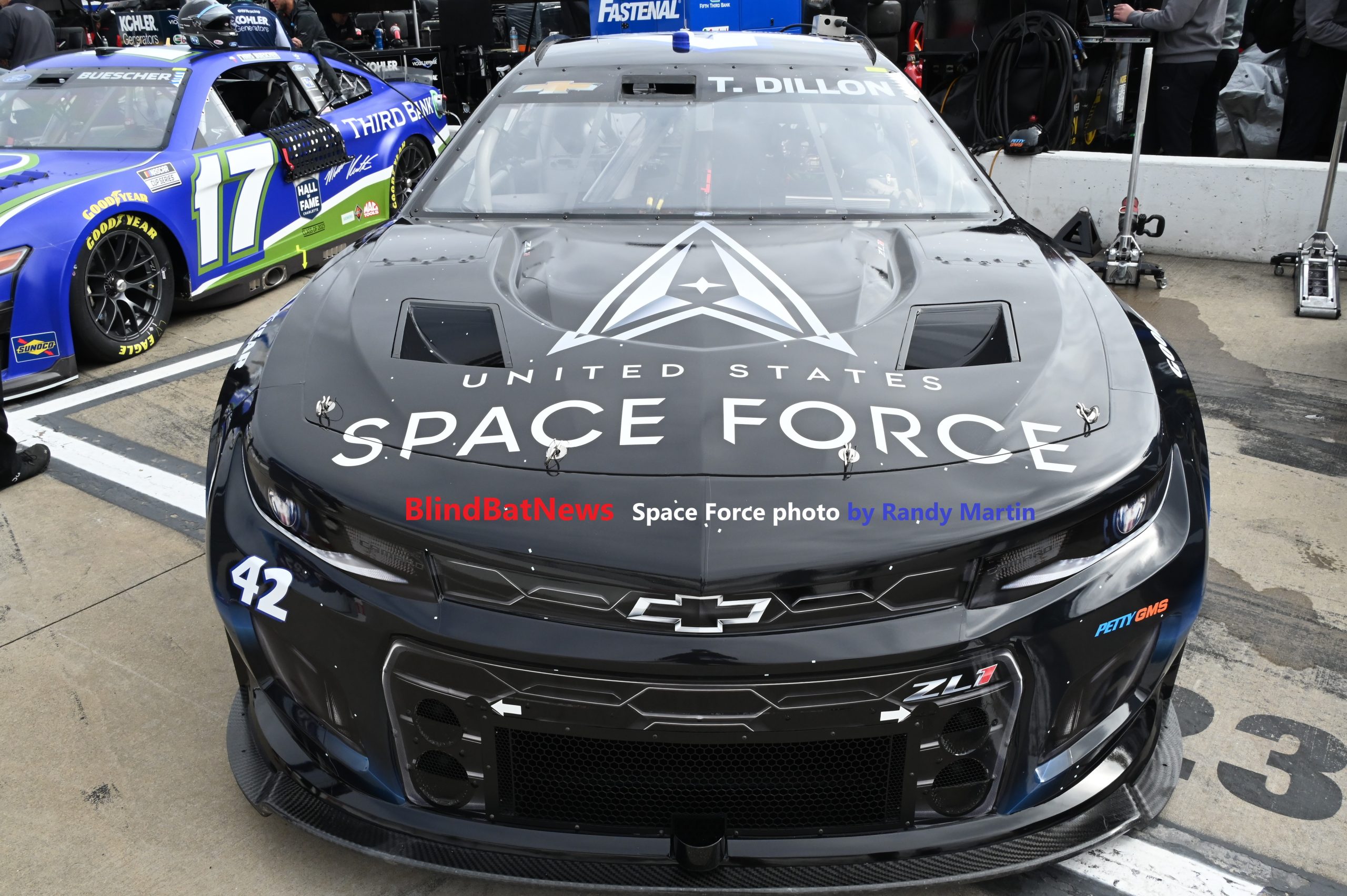 SPACE FORCE JOINS N-A-S-C-A-R!
SPACE FORCE JOINS N-A-S-C-A-R!
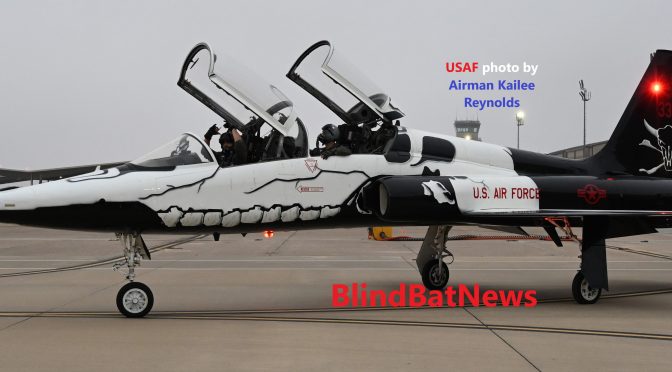
T-38 with 80th Anniversary logo on its tail, Laughlin Air Force Base (AFB), Texas, 05MAY2022.
87th Flying Training Squadron (FTS) heritage trainer on Laughlin AFB, Texas, 03FEB2022.
On Nellis AFB, Nevada, September 2021.
On Laughlin AFB, Texas, May 2021.
USAF video, by Airman First Class David Phaff, of 87-FTS T-38 Talon over Corpus Christi, Texas, 02MAY2021:
5th FTS ‘heritage’ T-38C Talon over Oklahoma, April 2021.
T-38 Talon of the 50th Flying Training Squadron (FTS), 14th Fighter Training Wing (FTW), Columbus Air Force Base, Mississippi, 15JUL2020.
87th FTS centennial flag ship, Laughlin AFB, Texas, August 2017.
T-38 Talon:
OLD SKOOL TALON TESTS NEW-TECH GLOBAL INFORMATION DOMINANCE EXPERIMENT
REPAIRING 1/1 SCALE T-38 TALON
F-106, TEST-BED FOR T-38 ENGINES
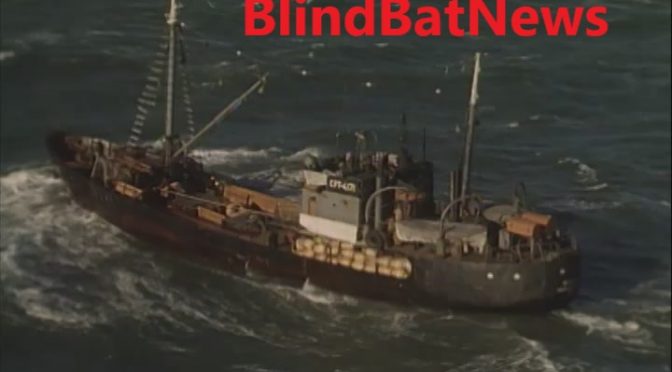
In 1964, NATO navies conducted Exercise Teamwork. This is interesting because non-military interweb sites (like the wiki-web-sites) claim NATO’s biennial (every other year) Exercise Teamwork didn’t begin until 1982! The proof that Exercise Teamwork actually started in 1964 comes from the declassification of a once secret NATO document. That document was a letter of concern regarding how the Soviet Union found out about the wargame, and sent several ‘spy’ fishing trawlers to shadow the NATO navies.
The NATO letter blames it on the main stream U.S. news media, specifically Time magazine, for publishing statements made during a U.S. trial of a spy. But then, there was a journalist working for Time, who was onboard the aircraft carrier USS Independence (CVA-62) during the wargames, who claimed that somebody in NATO tipped-off the Soviets!
Apparently, NATO’s first Exercise Teamwork, off the coast of NATO Norway, was a diversion from an established NATO wargame called FALLEX (Fall [as in Autumn] Exercise). A once secret NATO letter discussing FALLEX 62 suggested making changes for the upcoming FALLEX 64. Apparently, FALLEX 64 became Exercise Teamwork 64, possibly because of what was publicized about the trial of a spy in the United States.
U.S. Navy film, dated 1964 and titled Exercise Teamwork, showing ‘Russian Spy Fishing Trawler’. The smoke stack on this ship is different than the Revell kit’s stack:
But 1969 is the year the U.S. Navy really took an interest in all the Soviet fishing trawlers hanging around NATO navies, and even off the coast of the United States.
USN film, February 1969, showing Soviet ‘spy’ fishing trawlers operating off the coast of the U.S. state of Virginia, at least three different ships according to the USN info:
On 09APR1969, the USN spied on Soviet Mediterranean fleet operations, near the Rock of Gibraltar, and interestingly among all those big Soviet warships was a lone Soviet fishing trawler (you can see it as the camera pans from warship to warship), I edited for just the trawler scenes:
A May 1969 USN film documenting what was believed to be various Soviet surveillance ships, showing a similar ‘spy trawler’, with a different stack, location not indicated:
Now you know where the tech term phishing originated, Cold War era spy fishing boats, fishing for your country’s military info.
In 1970, model kit company Revell issued its Russian Spy Fishing Trawler Volga. Revell’s spy ship kit seems to combine attributes of all the trawlers seen in the USN films.
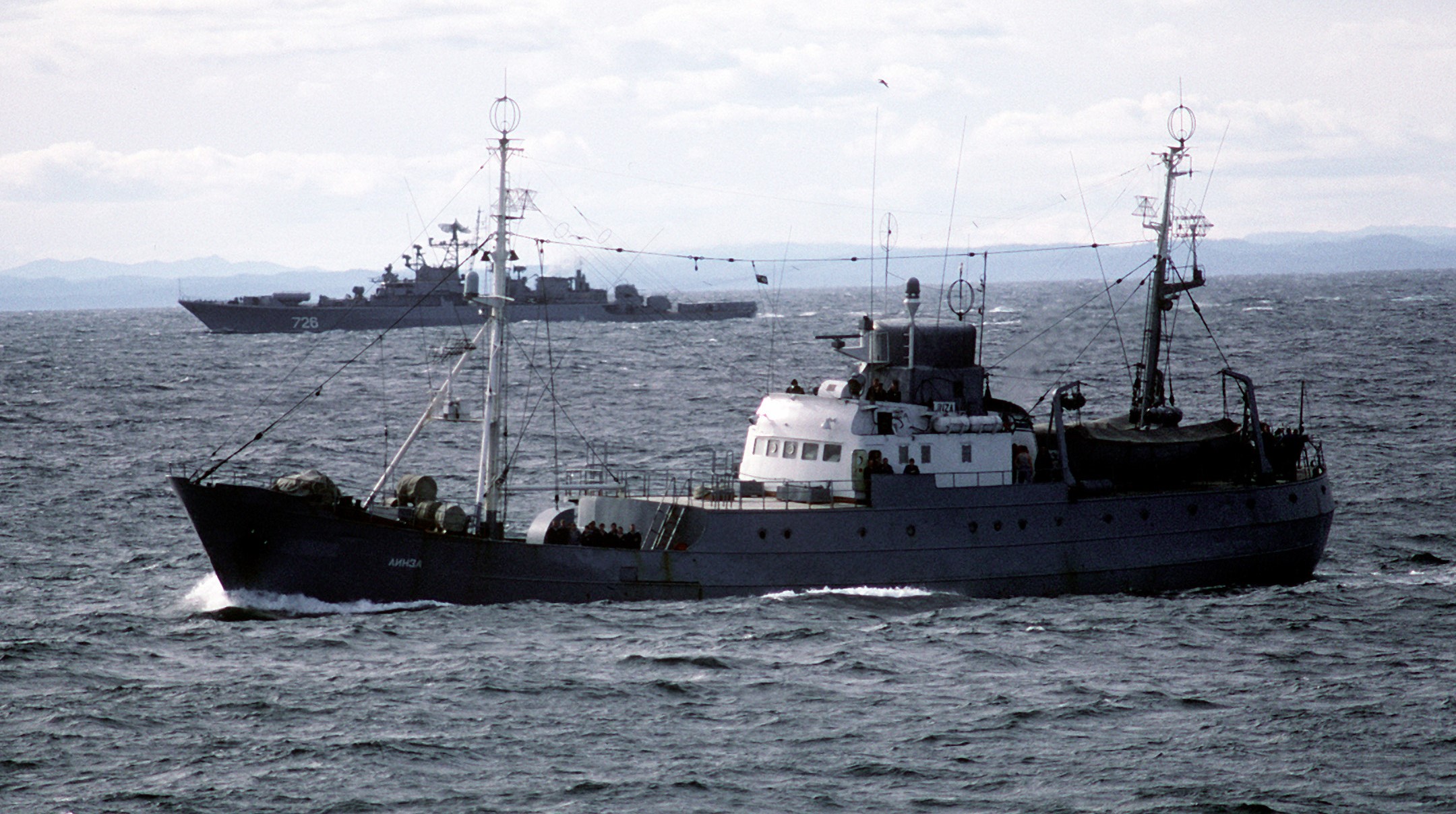
NATO called this a Okean class intelligence collection ship. USN photo by Photographer’s Mate First Class Jeff Hilton, August 1986.
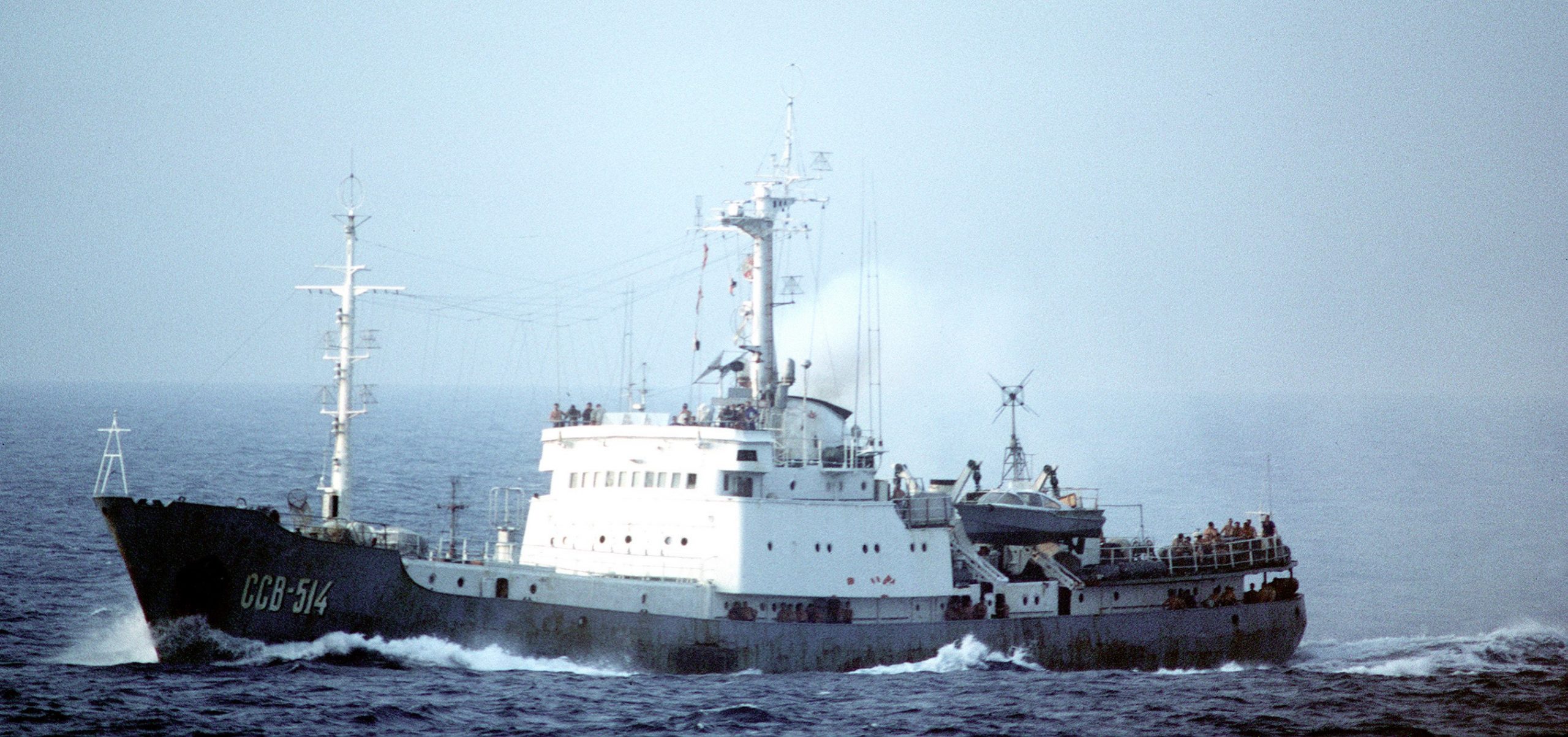
NATO called this a Moma class intelligence collection ship. USN photo by Photographer’s Mate First Class Jeff Hilton, August 1986.
The kit is continuously re-issued, but in 1998 the name was changed to Northsea Fishing Trawler.
Cold War & Beyond: 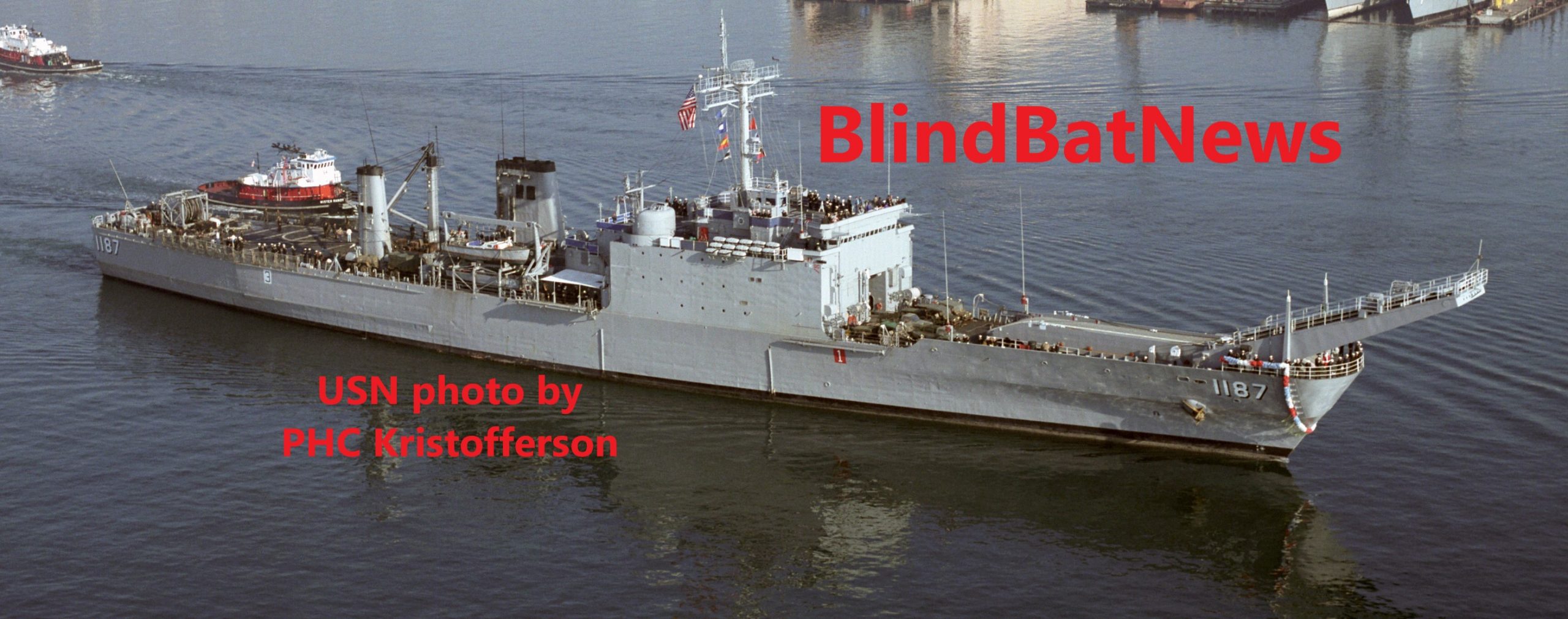 LIFE AND VIOLENT DEATH OF USS TUSCALOOSA
LIFE AND VIOLENT DEATH OF USS TUSCALOOSA
 LIFE & VIOLENT DEATH OF USS RODNEY M. DAVIS
LIFE & VIOLENT DEATH OF USS RODNEY M. DAVIS
MOSKVA CLASS SUBMARINE HUNTERS, STOP CALLING THEM AIRCRAFT CARRIERS!